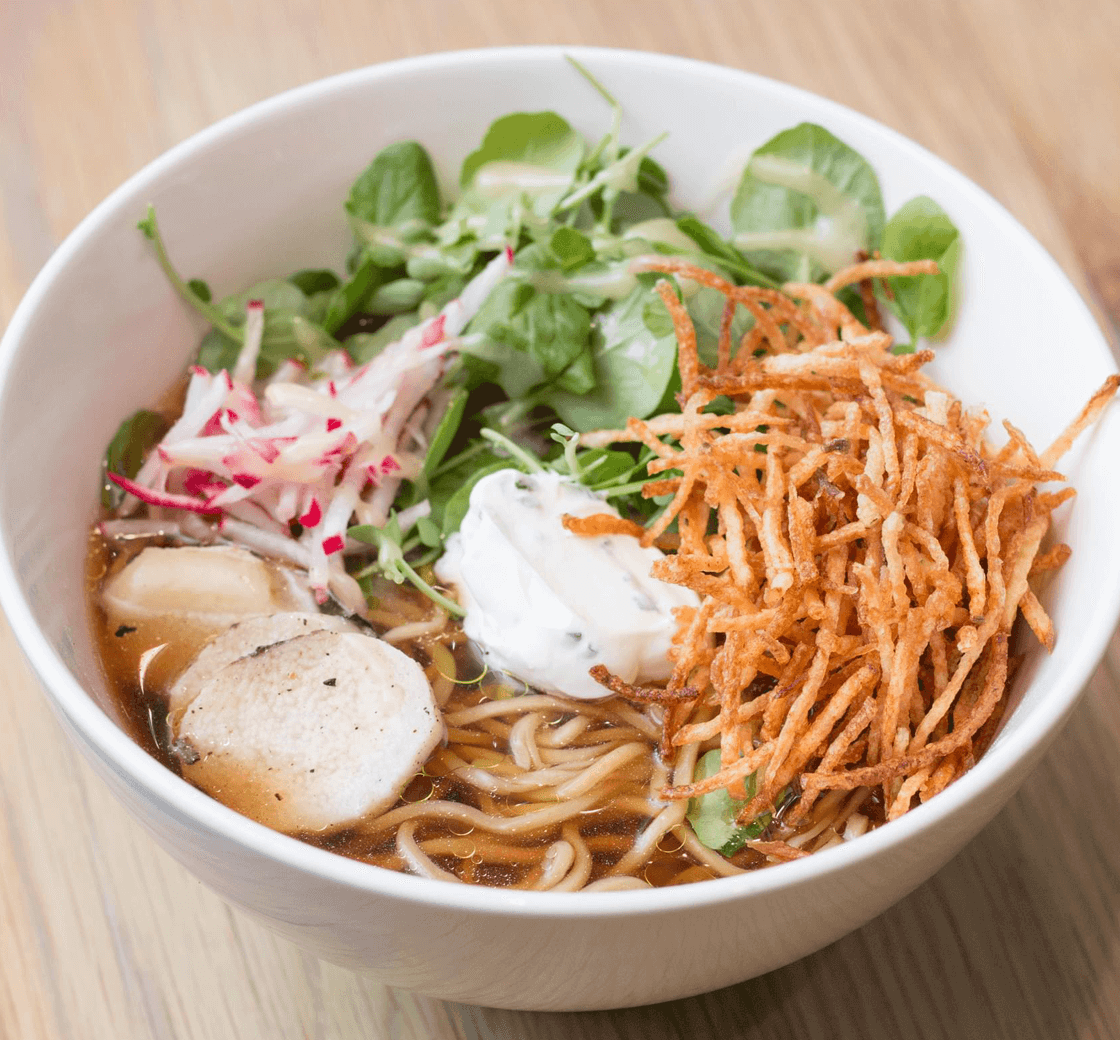
Japanese cuisine is a sophisticated affair, where the aesthetics of the final dish are as important as its taste. Sushi, tempura and shabu-shabu are among its most common exports, but only offer a small glimpse at the richness and variety of dishes found throughout the country. This class will offer you an overview of the foods of Japan, along with a discussion of ingredients and equipment. You will make dashi broth and miso soup; beef negimaki; pork katsudon with rice; and shrimp and vegetable tempura.

You will work in teams to execute the class menu. At the end of class, participants gather to enjoy the food they have prepared. Wine is served with meals in most classes. All class menus are subject to change. While a snack platter is offered in both morning and evening classes, you may want to consider a light snack before joining us for class. Students are encouraged to bring a light lunch or dinner to all pastry classes.

You will work in teams to execute the class menu. At the end of class, participants gather to enjoy the food they have prepared. Wine is served with meals in most classes. All class menus are subject to change. While a snack platter is offered in both morning and evening classes, you may want to consider a light snack before joining us for class. Students are encouraged to bring a light lunch or dinner to all pastry classes.
Discover the vibrant flavors of the Philippines in "Essentials of Filipino Cooking." This hands-on class teaches you to prepare iconic Filipino dishes cherished in homes across the archipelago. Master Chicken Adobo, with its savory-sour tang, and learn to make perfect Pancit noodles. You'll also prepare rich, vegetable-forward Pinakbet with Pork; creamy, coconut-infused Ginataang Kalabasa at Sitaw; and savory, citrusy Bistek Tagalog, all served with fluffy white rice. Gain essential skills and authentic ingredient insights – then bring the warmth and complexity of Filipino cuisine home to your kitchen.
Join an ICE chef for this delightful class on all things pizza. Together, couples will learn to make a quick-rise pizza dough to be topped with a variety of culinary creations: sauce and cheese will meet veggies, mushrooms, cured and fresh-cooked meats --- even sweet options for dessert pizza. Then you’ll sit down to each fresh-from-the-oven pie with a choice selection of pizza-perfect wines that pair with your imaginative culinary creations.
Bordered by both the Mediterranean and the Atlantic, with snow-capped peaks and lush green valleys, the diverse geography of France offers the best ingredients from the land and sea. You'll get a taste of the best of all those regions in this class. For your Francophile meal, you will prepare and enjoy frisée salad with shallot-bacon vinaigrette; steak frites (sautéed steak with hand-cut french fries); bouillabaisse (seafood soup from Marseille); and honey lavender blanc mange.
Ranked as America’s Best Culinary School (USAToday 2019), our roster of Chef-Instructors have run top kitchens around the globe.
| (Separate multiple addresses with commas like: john@aol.com, jane@aol.com) | |